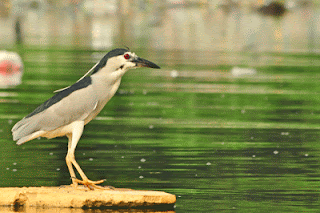Egrets aboard a bamboo raft
A flock of Black-Crown Night Heron
Black-Crown Night Heron on a floating debris
Black-winged Stilts
Heron readying for flight
The prized Philippine Ducks of LPPCHEA
Little Egret
Migratory birds frequent LPPCHEA because of the extensive mangrove cover of the area, the long stretch of mudflats and salt marshes, and its calm lagoons. It also happens that LPPCHEA lies along the East Asian – Australasian Flyway, making it an important stop for migrating birds coming from as far as Siberia.
Dubbed as the last coastal frontier of Manila, LPPCHEA is an ideal weekend getaway for families, friends, and groups interested in wildlife photography, scientific research or simply communing with nature, all without leaving the metro.
Open to the public, those interested in visiting the place may coordinate with LPPCHEA Office at 435-2410 and secure a Visitor's Application Form.
(Pictures taken by Mark Clee Marquez and Atty. Gilbert Gordove will be posted soon.)









